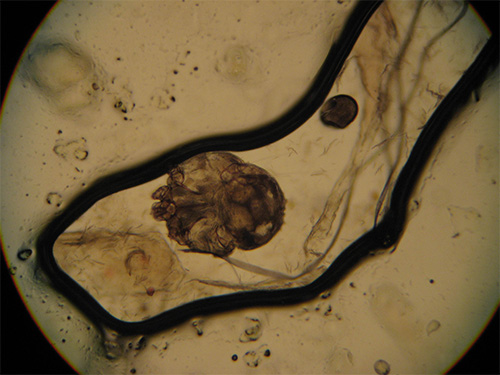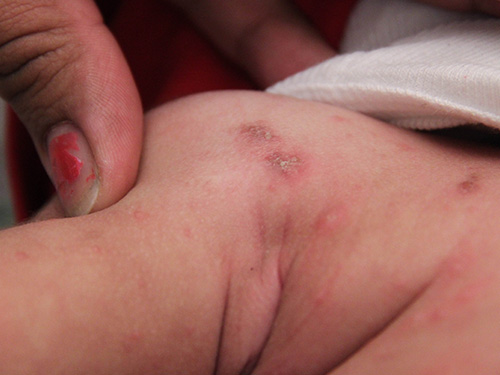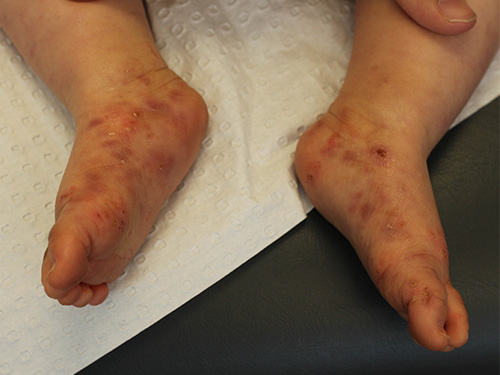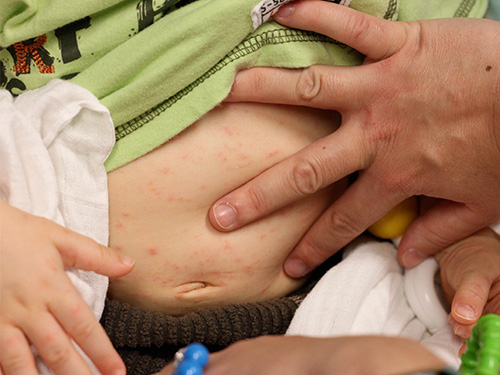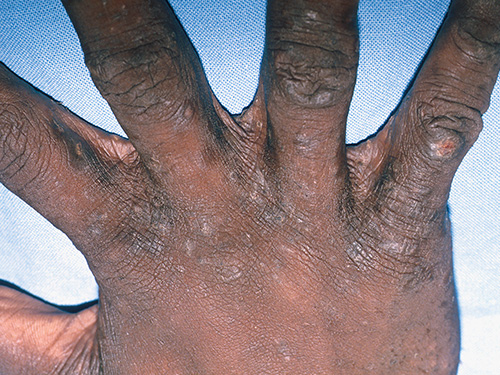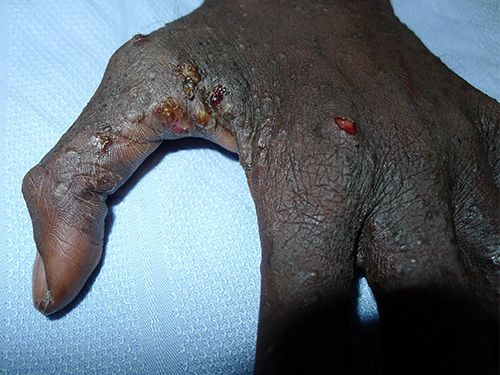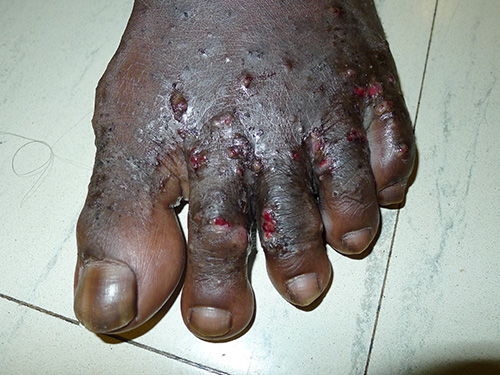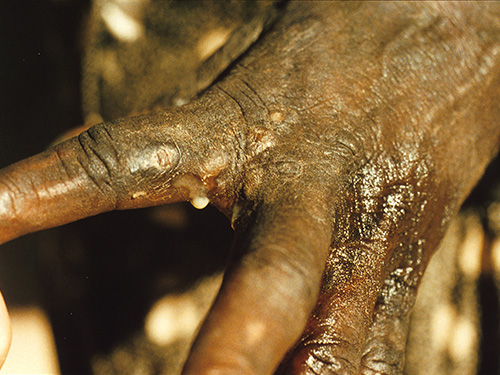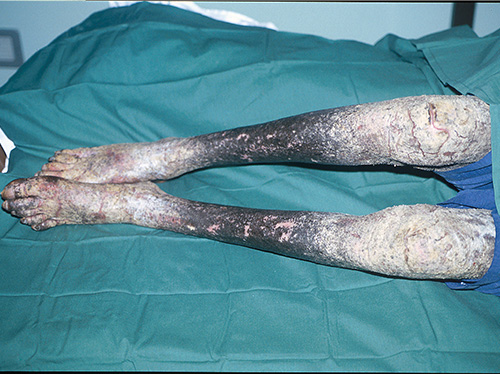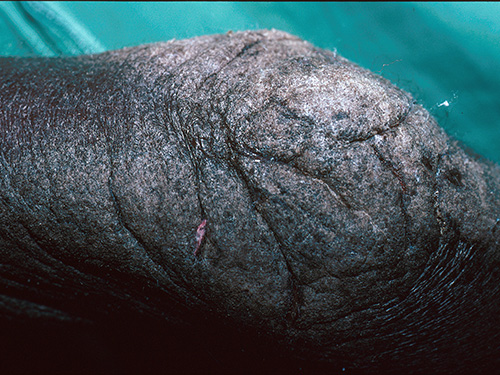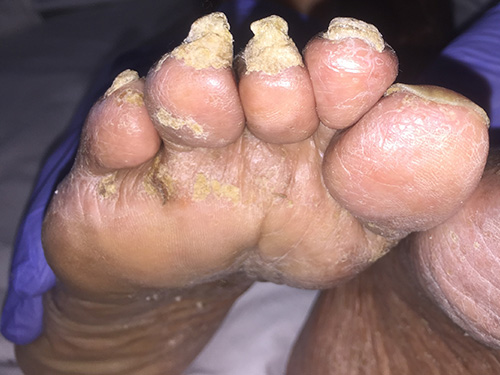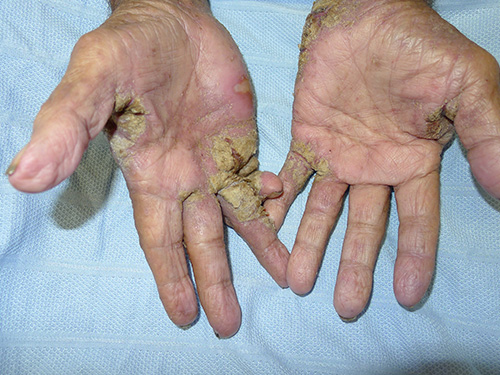Presentation and diagnosis of scabies
Scabies is caused by skin infestation with the mite Sarcoptes scabiei var. hominis, a human parasite that is spread by close physical contact between people. Human scabies is not acquired from animals.
Scabies is more common in school-aged children, Aboriginal and Torres Strait Islander communities, and closed communities such as residential aged care facilities. If untreated, it will usually spread to all members of a household.
An allergic reaction to the mite causes the signs and symptoms of scabies (eg rash, itch, burrows, nodules). The degree of this reaction is variable, and signs may be subtle or even absent—diagnosis of scabies is often delayed because it is not considered. Diagnosis is usually clinical, but confirmation of the diagnosis can be made by microscopy of scrapings from a burrow. If the mite is not detected on microscopy, the most practical diagnostic test is response to treatment.
For photos of scabies, including the scabies mite, see here.
For photos of crusted (Norwegian) scabies, see here.
